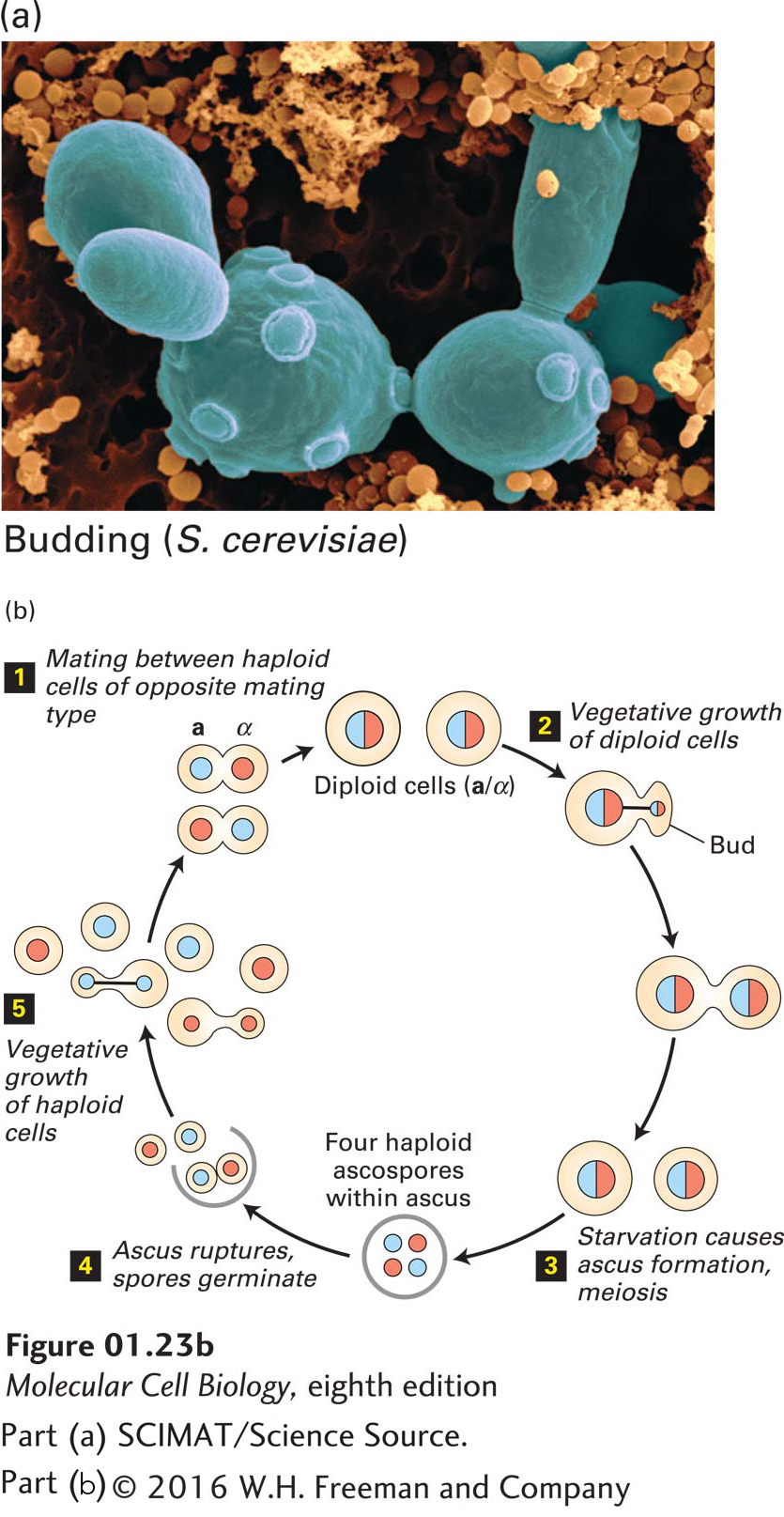Yeasts Are Used to Study Fundamental Aspects of Eukaryotic Cell Structure and Function
One group of single-
The common yeast used to make bread and beer, Saccharomyces cerevisiae, appears frequently in this book because it has proved to be an extremely useful experimental organism. Homologs of many of the approximately 6000 different proteins expressed in an S. cerevisiae cell (see Table 1-2) are found in most, if not all, eukaryotes and are important for cell division or for the functioning of individual eukaryotic organelles. Much of what we know of the proteins in the endoplasmic reticulum and Golgi complex that promote protein secretion was elucidated first in yeasts (see Chapter 14). Yeasts were also essential for the identification of many proteins that regulate the cell cycle and catalyze DNA replication and transcription. S. cerevisiae (Figure 1-23a; see also Figure 1-22a) and other yeasts offer many advantages to molecular and cellular biologists:
Page 20
Page 21
Vast numbers of yeast cells can be grown easily and cheaply in culture from a single cell; the cells in such clones are genetically identical and have the same biochemical properties. Individual proteins or multiprotein complexes can be purified from large amounts of cells and then studied in detail.
Yeast cells may be either haploid (containing one copy of each chromosome) or diploid (containing two copies of each chromosome), and both forms can divide by mitosis; this ability makes isolating and characterizing mutations in genes encoding essential yeast cell proteins relatively straightforward.
Yeasts, like many organisms, have a sexual cycle that allows exchange of genes between cells. Under starvation conditions, diploid cells undergo meiosis (see Chapter 19) to form haploid daughter cells, which are of two types, a and α cells. If haploid a and α cells encounter each other, they can fuse, forming an a/α diploid cell that contains two copies of each chromosome, one from each parent cell (Figure 1-23b).

With the use of a single species such as S. cerevisiae as a model organism, results from studies carried out by tens of thousands of scientists worldwide, using multiple experimental techniques, can be combined to yield a deeper level of understanding of a single type of cell. As we will see many times in this book, conclusions based on studies of S. cerevisiae have often proved true for all eukaryotes and have formed the basis for exploring the evolution of more complex processes in multicellular animals and plants.